Tom Lee Park, designed by Studio Gang and SCAPE, the new Mississippi riverfront public space, serves as the centerpiece of the city’s riverfront and a national model for inclusive and ecologically restorative urban parks.
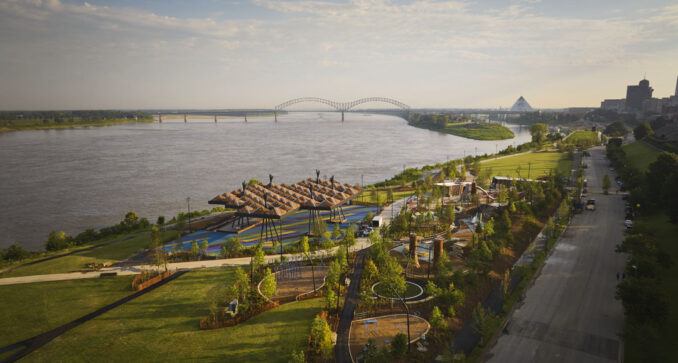
Tom Lee Park is a newly transformed 31-acre public space between the Mississippi River and downtown Memphis. The park’s design was a collaboration between Studio Gang and SCAPE, with Studio Gang leading master planning and architecture and with SCAPE leading its landscape design.
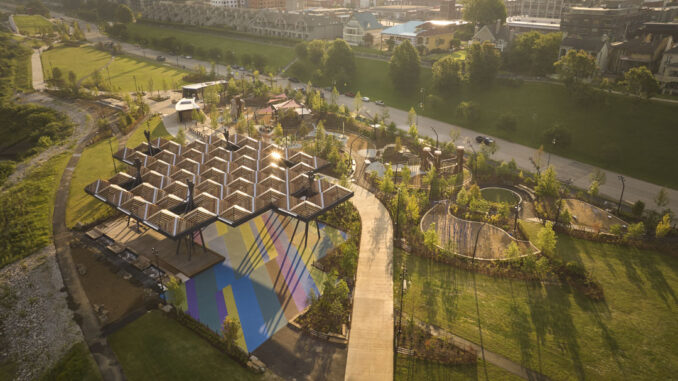
Named for Tom Lee, a local Memphis hero and Black river worker who single-handedly saved 32 people from drowning after a steamship capsized in 1925, the park’s design seeks to foster greater economic equity across Memphis by providing publicly accessible amenities for local residents. Situated on the banks of the Mississippi River, the park is adjacent to a crescent of disinvested neighborhoods, including the lowest-income zip code in Tennessee.
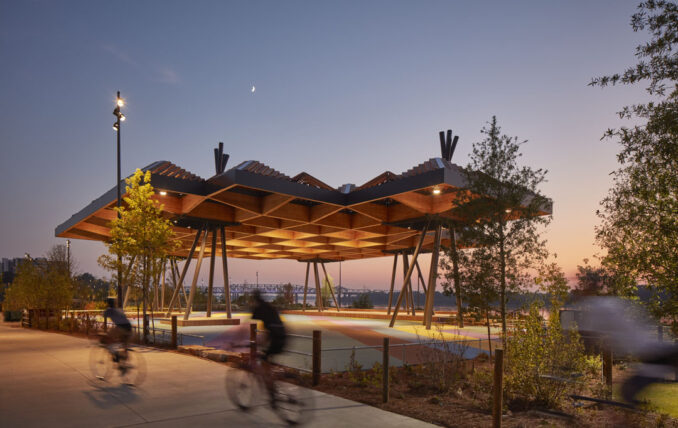
“Tom Lee Park’s design was inspired by the dynamic flow patterns of the Mississippi and the desire to revive the river corridor. We have rehabilitated the soils to nurture native plantings and planted over 1,000 trees where there were less than 50, providing essential shade, more biodiversity, and habitat for pollinators and birds,”
Kate Orff, Founding Principal, SCAPE.
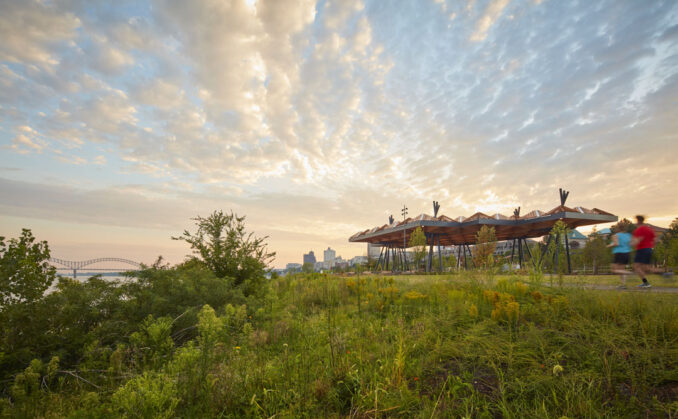
Tom Lee Park restores the area’s ecology, responding to the dynamic ecosystems of the Mississippi River. A restored soil system and introduction of hardy native plant species will attract birds and pollinators that thrive along the river corridor. Replacing flat expanses of grass and adding topography will provide new and surprising views of the river.
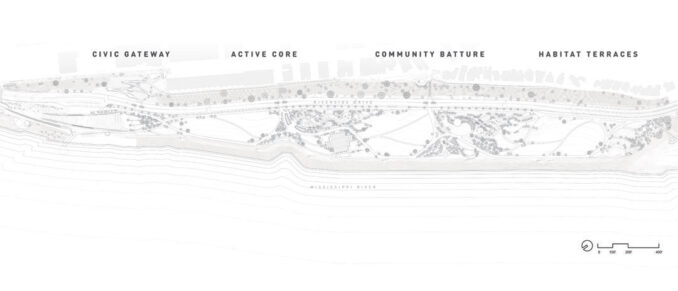
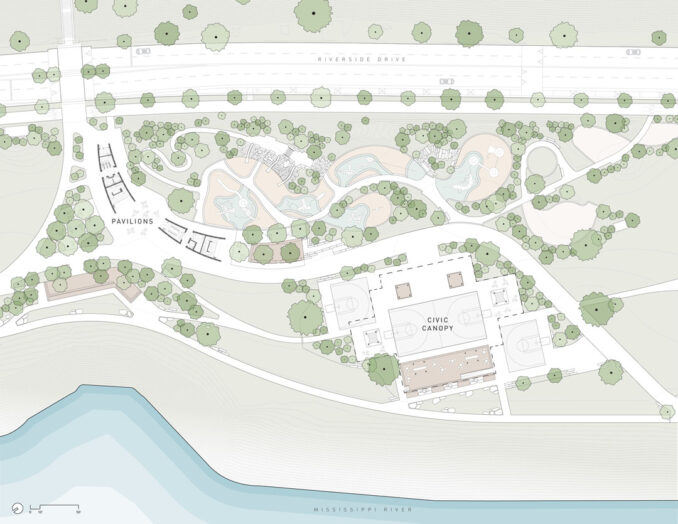
The design of Tom Lee Park also strengthens the connection between downtown Memphis and the river. It provides the first Americans with Disabilities (ADA)-compliant access to the river with the Cutbank Bluff and safer pedestrian crossings of Riverside Drive at Vance, Huling, and Butler Streets.
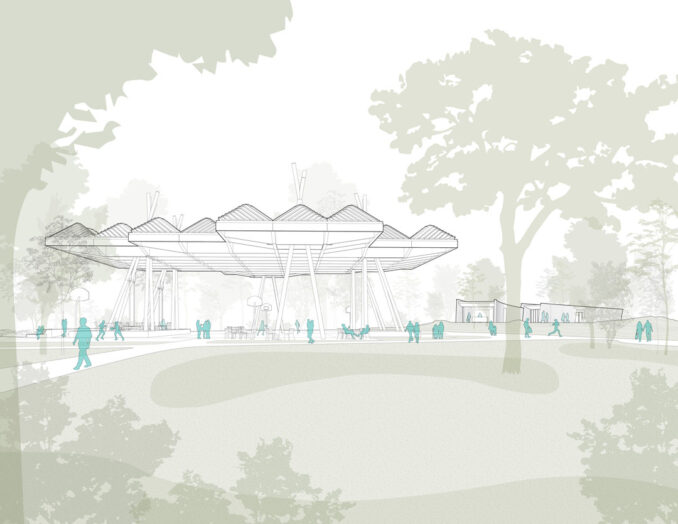
“Insights and input from the Memphis community were essential to this project from the very beginning, to make sure the park’s programming reflects how Memphians from across the city want to enjoy their riverfront. With their help, we’ve created a destination that is down-to-earth but also beautiful and ecologically healthy, where we hope everyone feels welcome to relax, exercise, play, and come together along the Mississippi.”
Jeanne Gang, Founding Principal and Partner of Studio Gang.
Its sheltering structures are made of timber, inspired by the industrial structures that once operated on the riverfront. A river-themed playground designed by Monstrum and landscape features create exciting destinations for recreation, outdoor education, dining, performances, and other activities—elevating them with the living backdrop of the Mississippi.
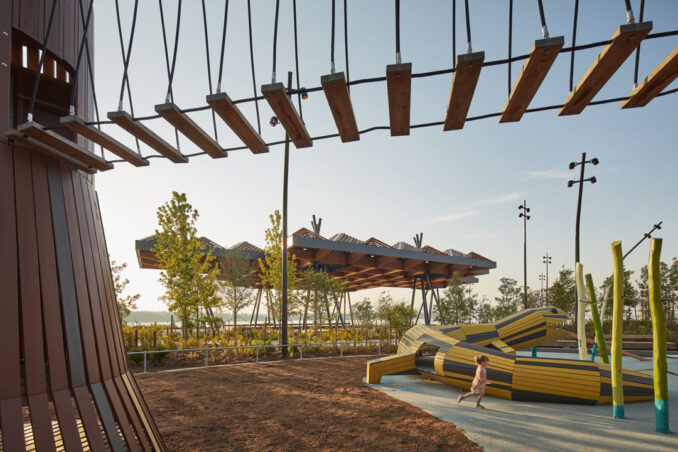
The architectural centerpiece of the park is the Sunset Canopy, a 16,000 sq ft timber structure supported by six “bundled” steel columns. Its wood beams are constructed with glued laminated timber (glulam), an engineered wood product with a much lower carbon footprint than traditional reinforced concrete or steel. Above the beams, louvered roof monitors, also made of wood, provide sun and rain protection for those below. The pavilion is designed to host community activities and events year-round—including basketball, yoga classes, dance lessons, and concerts.
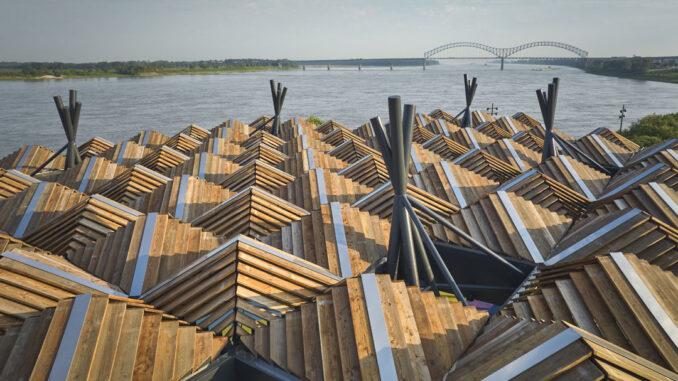
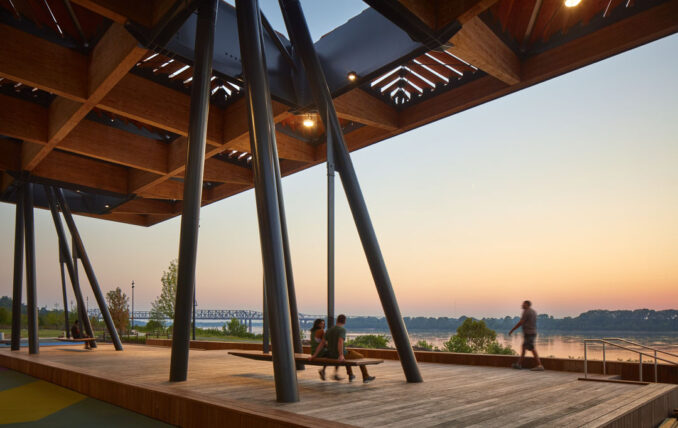
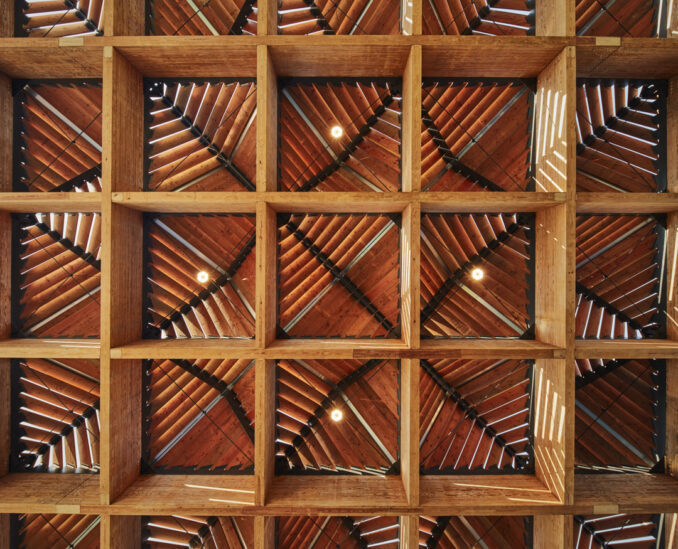
The park integrates two newly commissioned public art installations: A Monument to Listening, by Theaster Gates, and a multi-colored, geometrically patterned basketball court installation created by New York City-based artist James Little, who was born and raised in Memphis. Little’s project is situated under the Sunset Canopy.
A series of open lawns define the park’s four zones: the Civic Gateway, Active Core, Community Batture, and Habitat Terraces. While each has its own distinct character, they are unified by an overarching plan inspired by the hydrological forms of the Mississippi River. Transforming a once flat expanse of lawn, undulating hills of native plants and trees sculpt spaces inspired by the dynamism of the Mississippi River. Civic, recreational, to contemplative, these spaces host a range of activities and provide habitat for native birds and pollinator insects that migrate along the Mississippi Flyway Corridor.
The planning and design process, which got underway in 2017, involved the substantive input of thousands of Memphians as well as a Youth Design Leadership program, which embedded local teens in the design process.
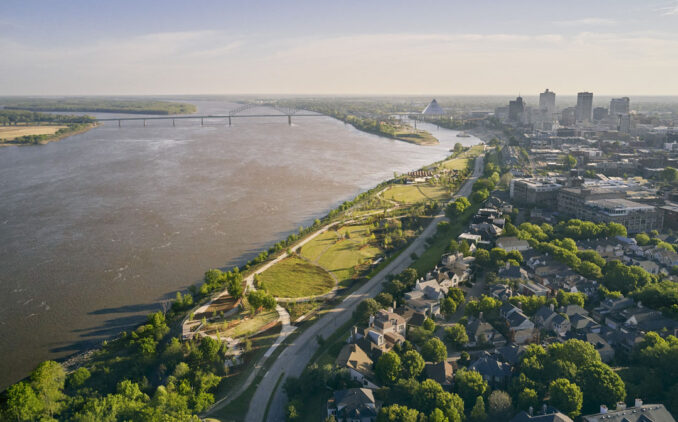
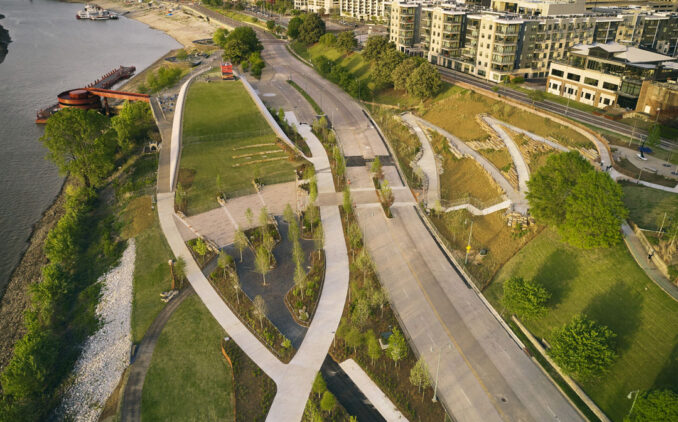
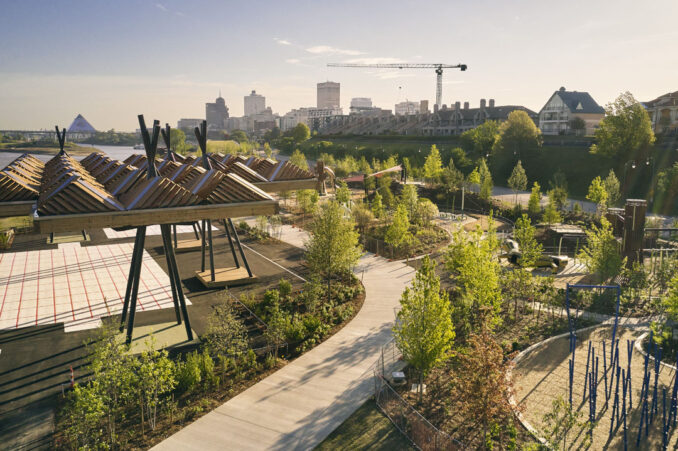
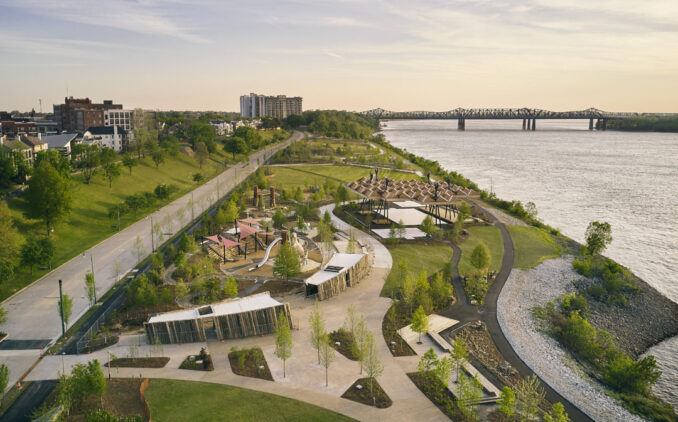
During Construction Image Credits: ©SCAPE&Ty-Cole
Delivered in a public-private partnership, the $61 million project includes contributions from the city, county, state, and federal governments, along with a consortium of local and national philanthropies, corporations, and individuals.
Tom Lee Park
Memphis River Parks Partnership – Project Lead and Client
Tyree Daniels, Board Chair
Carol Coletta, President and CEO
George Abbott, Director of External Affairs
Studio Gang – Master Planner and Architect
Jeanne Gang, Founding Principal and Partner Gia Biagi, Urbanism PrincipalChris Bennett, Senior Project LeaderTim Shouder, Project Leader
SCAPE – Landscape Architect
Kate Orff , Founding Principal
John Donnelly, Technical Principal
Brad Howe, Design Director
Will Tietje, Senior Associate
Tanner Perrin, Associate
Montgomery Martin Contractors – Contractor
Kimley-Horn – Civil Engineer
Thornton Tomasetti – Structural Engineer
Innovative Engineering Services – M/E/P Engineer
DataBased+ – Sustainability Analysis
Randy Burkett Lighting Design – Lighting Designer
Theaster Gates – Artist
James Little – Artist
MONSTRUM – Playground Designer
